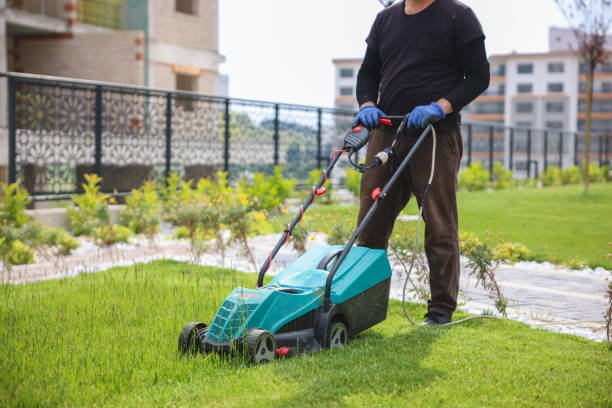Elevate Your Outdoor Space with Lawn and Landscaping
Creating a beautiful outdoor environment goes beyond simple lawn maintenance. Lawn and landscaping services encompass a variety of tasks that enhance your property’s curb appeal and functionality. This guide explores the importance of professional lawn care and landscaping in Rochester NY, offers insights on how to choose the right services, and addresses common questions about lawn and landscaping.
Why Lawn and Landscaping Matter
Lawn and landscaping play a crucial role in enhancing the aesthetic appeal of residential and commercial properties. A well-maintained lawn creates a welcoming atmosphere, while thoughtfully designed landscapes can increase property value. Beyond aesthetics, these services also promote environmental health by improving air quality, reducing soil erosion, and providing habitats for local wildlife.
Key Components of Lawn Care
Mowing
Regular mowing is essential for maintaining a healthy lawn. Proper mowing practices encourage growth and help control weeds. Mowing should be done at the right height for the type of grass you have, typically around 2.5 to 4 inches, depending on the variety.
Fertilization
Fertilization provides essential nutrients that grass needs to thrive. A professional lawn care service will assess your soil’s nutrient levels and recommend appropriate fertilizers. Timing is crucial; typically, spring and fall are the best times to fertilize to promote healthy growth.
Aeration
Aeration involves perforating the soil with holes to allow air, water, and nutrients to penetrate. This process reduces soil compaction, promotes root growth, and improves water absorption. Aerating your lawn is especially beneficial if you have heavy foot traffic or clay soil.
Weed and Pest Control
Weeds and pests can quickly take over a lawn, detracting from its beauty. Professional lawn care services offer weed management strategies, including pre-emergent and post-emergent herbicides. Integrated pest management techniques help control harmful insects while minimizing environmental impact.
The Art of Landscaping
Landscaping goes beyond just lawn care; it involves designing and maintaining outdoor spaces. Here are some key aspects of landscaping:
Design Principles
Effective landscaping combines various elements, including plants, hardscapes, and features like patios or pathways. Key design principles include balance, contrast, harmony, and rhythm. A well-designed landscape creates a cohesive look and enhances usability.
Plant Selection
Choosing the right plants is vital for a successful landscape. Consider climate, soil type, and sunlight availability when selecting plants. Native plants are often a great choice, as they require less maintenance and provide habitat for local wildlife.
Hardscaping
Hardscaping refers to the non-plant elements of landscaping, such as walkways, retaining walls, and patios. These features not only enhance the visual appeal but also create functional spaces for outdoor activities. Proper installation is crucial for durability and aesthetics.
Irrigation Systems
An efficient irrigation system is essential for maintaining a healthy landscape. Consider installing a drip irrigation system or sprinklers to ensure your plants receive adequate water without waste. Smart irrigation controllers can help optimize watering schedules based on weather conditions.
Choosing the Right Lawn and Landscaping Service
Research and Recommendations
Start by researching local lawn and landscaping companies. Look for online reviews and ask for recommendations from friends or neighbors. A reputable company will have a solid track record of satisfied customers.
Services Offered
Different companies may offer varying services. Some specialize in lawn care, while others focus on landscaping design. Ensure the company you choose can meet your specific needs, whether it’s routine maintenance or a complete landscape overhaul.
Experience and Credentials
Experience matters in lawn and landscaping. Look for companies with certified professionals who understand the nuances of plant care, soil management, and landscape design. Certifications from organizations like the National Association of Landscape Professionals (NALP) can be a good indicator of expertise.
Get Quotes
Before making a decision, obtain quotes from several companies. Compare not only the costs but also the services included. A lower price might not always mean better value if it comes with less thorough service.
FAQs
Q1: How often should I mow my lawn?
Most lawns need mowing every 1-2 weeks during the growing season. The frequency can vary based on grass type and climate conditions.
Q2: When is the best time to fertilize my lawn?
The best times to fertilize are in the spring and fall when grass is actively growing. A soil test can help determine specific nutrient needs.
Q3: How can I control weeds without harmful chemicals?
Consider organic weed control methods, such as mulch, hand pulling, or using vinegar as a natural herbicide. Pre-emergent herbicides can also be used to prevent weed growth.
Q4: What are some low-maintenance plants for landscaping?
Low-maintenance plants include succulents, ornamental grasses, and native plants suited to your climate. These require less watering and care.
Q5: How do I know if my lawn needs aeration?
If your lawn feels hard, shows signs of poor drainage, or has excessive thatch, it may need aeration. Regular aeration is also beneficial for high-traffic areas.
Conclusion
Investing in professional lawn and landscaping services not only enhances the beauty of your property but also contributes to a healthier environment. By understanding the key components of lawn care and landscaping design, you can make informed decisions about maintaining your outdoor space. With the right care, your lawn can become a vibrant, inviting area that you and your family can enjoy for years to come.






